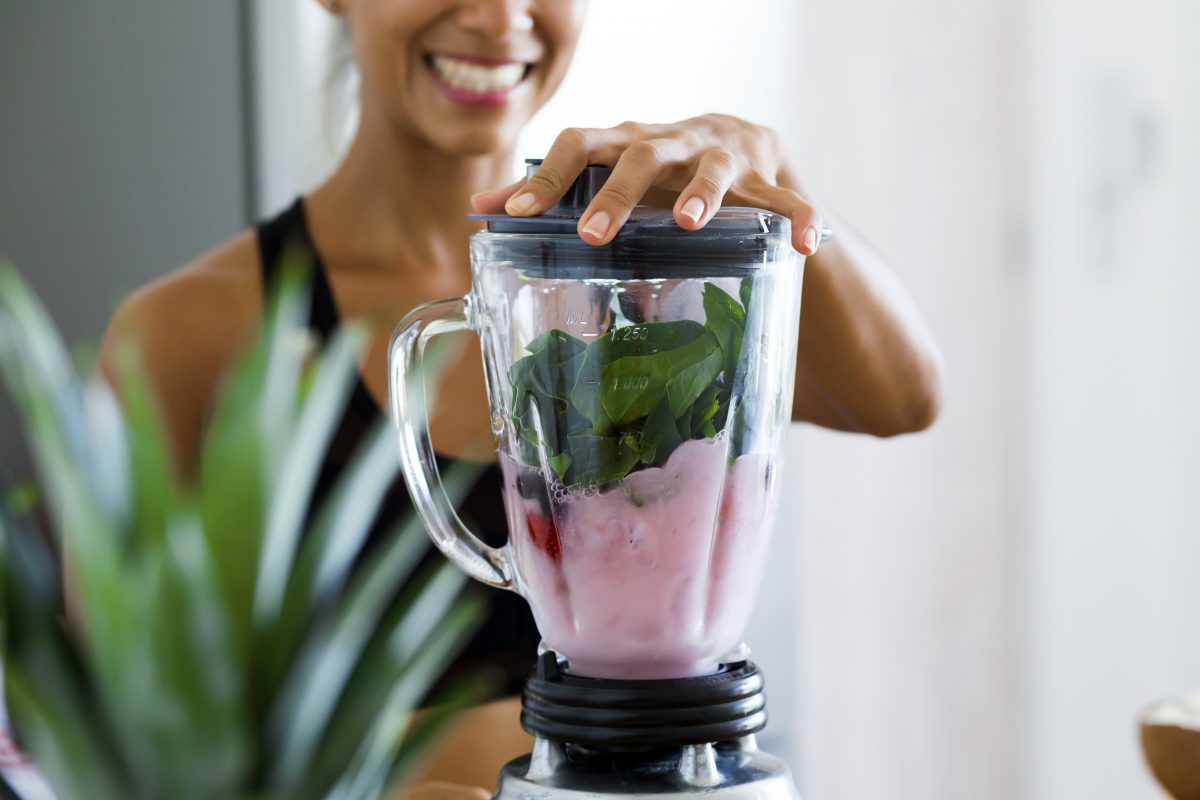25 low FODMAP smoothie recipes
- Low FODMAP diet
- Low FODMAP Recipes
Low FODMAP smoothies can be a great way to diversify your diet. Fruits and vegetables are abundant in vitamins, minerals, polyphenols, and dietary fibre (1).
It’s no surprise that you might find reaching your target of 5 A Day fruits and vegetables whilst following a low FODMAP diet. That can be an issue as many of them contain high levels of FODMAPs.
But you don’t need to be deprived. This article will give you 25 recipes for low FODMAP smoothies to get the variety of fruit and vegetables your gut will thank you for.

DO LOW FODMAP SMOOTHIES EXIST?
Sure! Just make sure to use only low FODMAP fruits and low FODMAP vegetables.
You should also pay attention to FODMAP stacking. When making a smoothie, you mix various fruits and vegetables. The portions of particular fruits and vegetables may be classed as low FODMAP individually.
However, this can become an issue if when combined, the total FODMAP load then increases, making it a high FODMAP smoothie.
SHOP-BOUGHT LOW-FODMAP SMOOTHIES
Grabbing a smoothie from a shop during a lunch break might sound like a healthy and nutritious option. However, the quantities or types of each fruit or vegetable are not often specified. This means they could be very high in FODMAPS, without us knowing.
Shop-bought smoothies can also have appealing but misleading labels. For example, they may promise a “detox effect” or “no added sugars” (although they can still be high in sugar).
HOMEMADE LOW FODMAP SMOOTHIE RECIPES
An alternative to a shop-bought smoothie is a fresh home-prepared smoothie. This allows you to decide what goes in it and therefore the FODMAP content.
All smoothies linked below are safe to consume on a low FODMAP diet. Or if you want to make up your own recipe, check the ingredients and their FODMAP content against the Monash app.
LOW FODMAP SMOOTHIES WHICH ARE ALSO HIGH PROTEIN
Having a protein smoothie can be a fantastic, balanced meal on the go. Proteins are also known to have the highest satiety effect, which means you will be full longer (2).
To make your smoothie high in protein, you can add to your favourite ingredients lactose-free greek yoghurt, or lactose-free milk. Also, you can try adding a scoop of low FODMAP protein powder, low FODMAP nuts, or firm tofu. Otherwise, follow a recipe linked below:
- Almond Vanilla Protein Delight
- Creamy Wildberry Smoothie
- Choc Peanut Butter Smoothie
- High Protein Pecan Pie Smoothie
LOW FODMAP SMOOTHIES – GREEN RECIPES
Research shows that daily consumption of ≥ 100 g of green leafy vegetables has a great impact on our health. Its regular consumption is associated with better cardiovascular health, has a protective role against cancer, and decreases the risk of mortality of all causes (3).
Luckily, green leafy vegetables are low FODMAP in certain quantities according to Monash. More precisely, as low FODMAP is considered 75 g of spinach or 75 g of kale.
Sometimes, we are just busy or distracted with other things, and our meals can become monotonous. An easy and quick solution is to include green smoothies; choose between:
- Green Kiwi Smoothie
- Citrus Ginger Green Smoothie
- Kale And Orange Smoothie
- Fruit and Veggie Smoothie
- Veggie Smoothie
- Green Smoothie with Almond Milk
- Turmeric Ginger Smoothie with Greens
- Tummy-Taming Green Smoothie
LOW FODMAP SMOOTHIE BOWL RECIPES
If you prefer a thicker consistency, we got your back. Try the recipes listed below, get creative by adding your favourite low FODMAP toppings and make it look irresistible.
- Cacao Peanut Butter Smoothie Bowl
- Blueberry Smoothie Bowl
- High Protein Berry Smoothie Bowl
- Dragon Fruit Smoothie Bowl
- Protein-packed Mixed Fruit Smoothie Bowl
- Chocolate Chia Smoothie Bowl
- Kiwi Kakadu Plum Smoothie Bowl
- Acai Smoothie Bowl
LOW FODMAP SMOOTHIE RECIPES – WITH OATS
Including oats in your smoothie can add additional gut-loving fibre and, with regular consumption, contributes to better heart health (4).
According to Monash, most individuals with IBS should tolerate oats in small quantities (½ cup). The following recipes are low FODMAP and safe to consume during the restriction phase.
SUMMARY
Consuming fruits and vegetables is essential for gut health and overall health.
As we are often in a hurry, grabbing a smoothie could be a quick and nutritious option for a meal or snack as long as you prepare it by yourself. It can diversify your diet and help you to consume a sufficient quantity of dietary fibre and micronutrients.
Follow a recipe linked above and enjoy your smoothie!
Written by Barbara Lešnik, Student Dietitian and edited by Beth Willson Specialist Surgical Dietitian